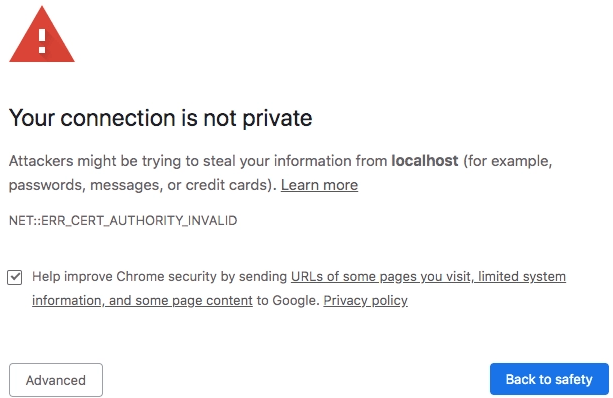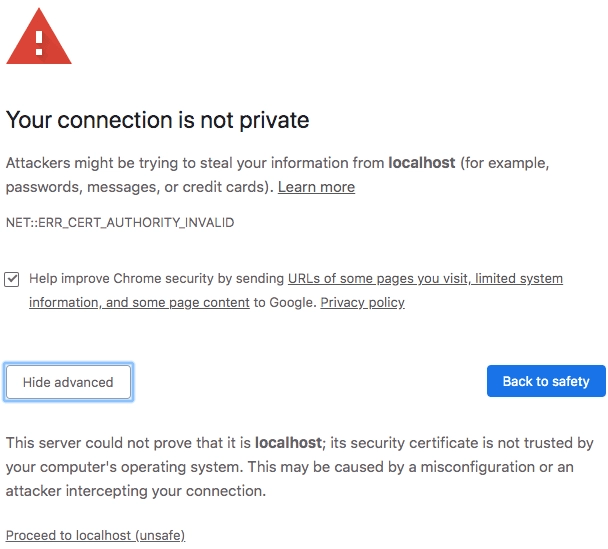Troubleshooting - AEM Assets View Extensibility
The ability to get fast feedback and see if the code works as expected is crucial for rapid development. A developer may connect locally running UI Extension to production AEM Assets View, link it to the correct AEM backend, and verify all changes before deployment and extension publication.
UI Extensibility is supported in Assets Ultimate only.
To get access to Assets View UI extensibility, create and submit an Adobe Customer Support case. You can provide documentation feedback by clicking "Log an issue".
Running in local environment
There are two options to run an extension locally:
- Complete local environment isolation. In this case, both the front-end code of your extension and the serverless actions
run locally. This mode is enabled with the
aio app devcommand. - Partial isolation using the
aio app runcommand, where the extension still uses Adobe I/O Runtime and deploys server-side functions in Adobe cloud.
For both options, the local development server with file change monitoring will be started to serve as the UI Extension front-end part.
Regardless of where the server-side handlers are running, in local containers or on I/O Runtime, the developer will be able to connect a debugger to trace script execution.
Complete local environment isolation
Copied to your clipboard➜ demo-extension-project % aio app dev
This will deploy the actions to a local OpenWhisk instance, which the CLI will automatically download and install. The extension SPA will be run on the local machine.
Copied to your clipboard➜ demo-extension-project % aio app devTo view your local application:-> https://localhost:9080To view your deployed application in the Experience Cloud shell:-> https://experience.adobe.com/?devMode=true#/custom-apps/?localDevUrl=https://localhost:9080Your actions:web actions:-> https://localhost:9080/api/v1/web/aem-assets-details-1/my-actionnon-web actions:press CTRL+C to terminate the dev environment2024-10-16T13:53:10.658Z [serve] info: server running on port : 90802024-10-16T13:53:11.983Z [serve] info: 513 static asset(s) changed2024-10-16T13:53:11.983Z [serve] info: ✨ Built 3 bundles in 1223ms!
Use Adobe I/O Runtime to deploy server-side handlers
Copied to your clipboard➜ demo-extension-project % aio app run
This will deploy the actions to Adobe I/O Runtime while running the UI part on the local machine.
Copied to your clipboard➜ demo-extension-project % aio app runFor a developer preview of your UI extension in the AEM environment, follow the URL:-> https://experience.adobe.com/aem/extension-manager/preview/<preview hash>create .vscode/launch.jsonNo change to package.json was detected. No package manager install will be executed.To view your local application:-> https://localhost:9080To view your deployed application in the Experience Cloud shell:-> https://experience.adobe.com/?devMode=true#/custom-apps/?localDevUrl=https://localhost:9080press CTRL+C to terminate dev environment
Now your UI extension is reachable via the URL shown in the Terminal.
UI Extension endpoint
Once local runtime is started extension endpoint is returned as URL in To view your local application.
You will need this URL to embed the locally running extension into AEM Assets View.
Accept the Certificate
If you are using this application for the first time, you will see a message similar to
Copied to your clipboardsuccess: generated certificateA self signed development certificate has been generated, you will need to accept it in your browser in order to use it.Waiting for the certificate to be accepted.... timed out
This message pops up because we use a development SSL certificate for secure communication. Learn more about the purpose of this certificate here.
If you see this message, please navigate to https://localhost:9080. In Google Chrome you should see a screen similar to this.

Click on Advanced, the nex screen may vary from browser to browser, but you should see a screen like this, where you can click on Proceed to localhost (unsafe) to accept the certificate.

As alternative in Google Chrome you may type thisisunsafe. Please reference to documentation of your browser how to accept self-signed certificate.
You may need to exit the current process and run aio app run again.
Load UI Extension
Using extension endpoint URL returned at the end of run command output you may embed it into production environment of AEM Assets View:
- Navigate to AEM Assets View
- Add the following query parameters to the URL:
devMode=true- instructs Adobe Experience Shell to allow content from localhostext=<extension_endpoint_url>- full extension endpoint URL. You may use multipleextparameters to test several extensions at time.
- Hit Enter to reload AEM Assets View with added extension
Overall AEM Assets View URL should look similar to https://experience.adobe.com/?devMode=true&ext=https://localhost:9080&repoId=author-p12345-e123456-cm.adobeaemcloud.com#/@org/assets/workspace/.
ext= query parameter
The ext query parameter supports different syntax variations depending on number of extensions to be loaded and
their extension points.
The complete syntax of the ext= query parameter is:
Copied to your clipboardext.<ExtensionPointId>=<url>[,<url>]
, where
ExtensionPointIdis the ID of the extension point in AEM Assets Viewurlis the URL of the extension to be loaded
You may specify multiple ext parameters with different ExtensionPointIds to load several extensions
for different extension points at the same time. You may also specify multiple extension URLs
for the same extension point by separating them with a comma.
Example:
ext.aem%2fassets%2fdetails%2f1=https://localhost:9080 loads locally running extension from https://localhost:9080
and applies it to the aem/assets/details/1 extension point.
The ext= parameter can also be used without specifying the extension point ID:
Copied to your clipboardext=<url>[,<url>]
, where
urlis the URL of the extension to be loaded
In this case, AEM Assets View will apply the extension to all available extension points.


